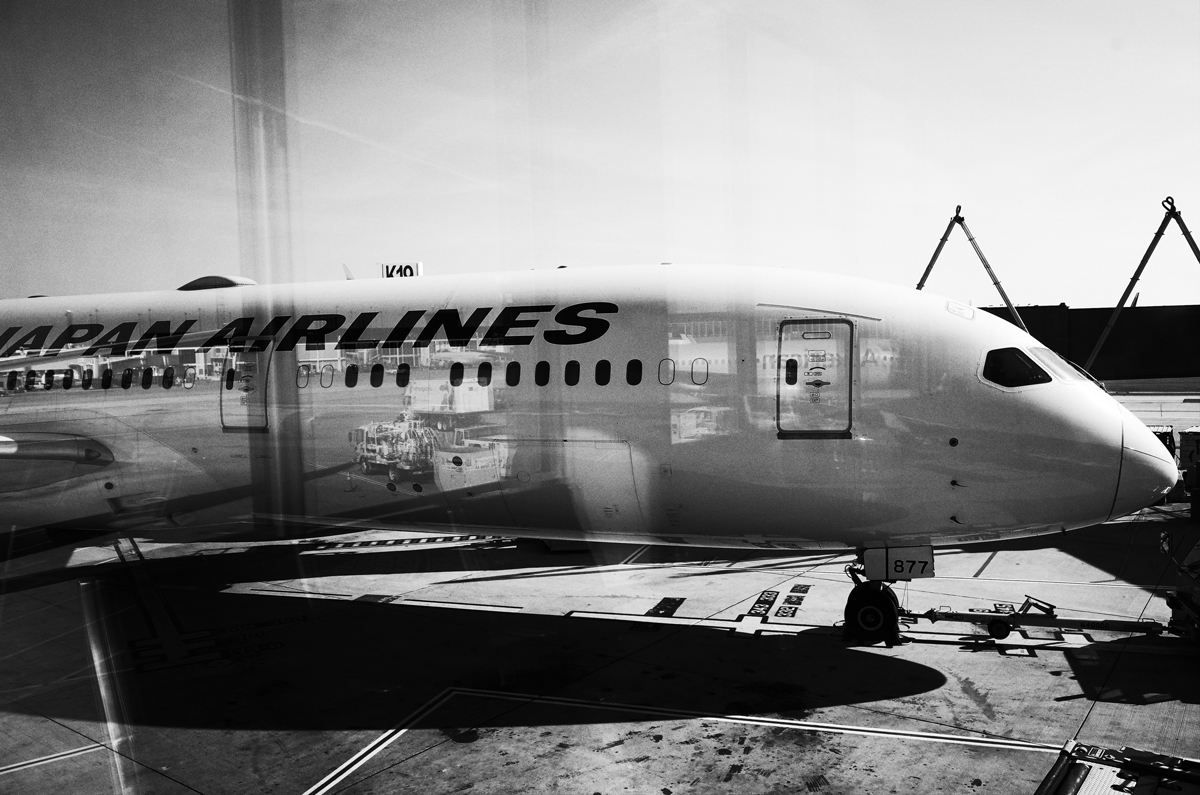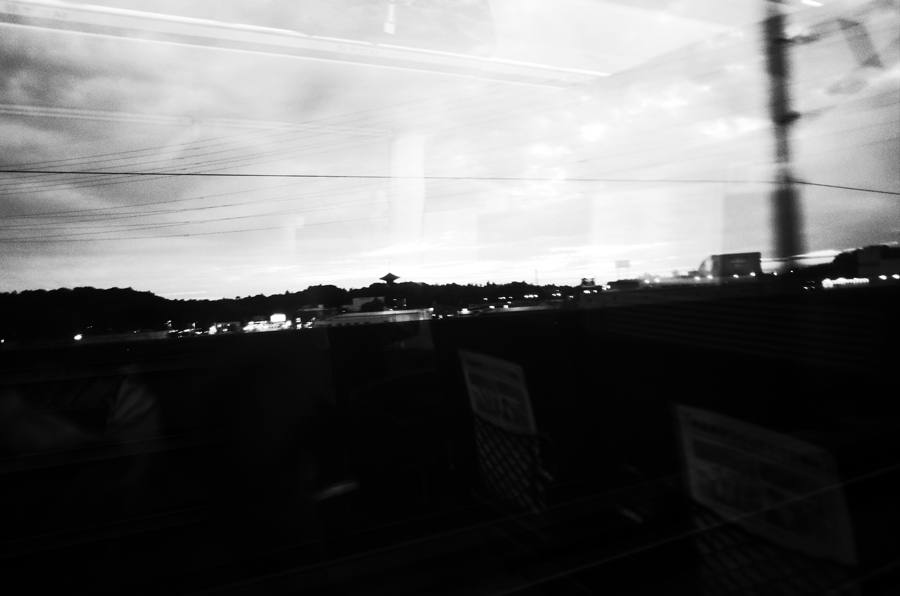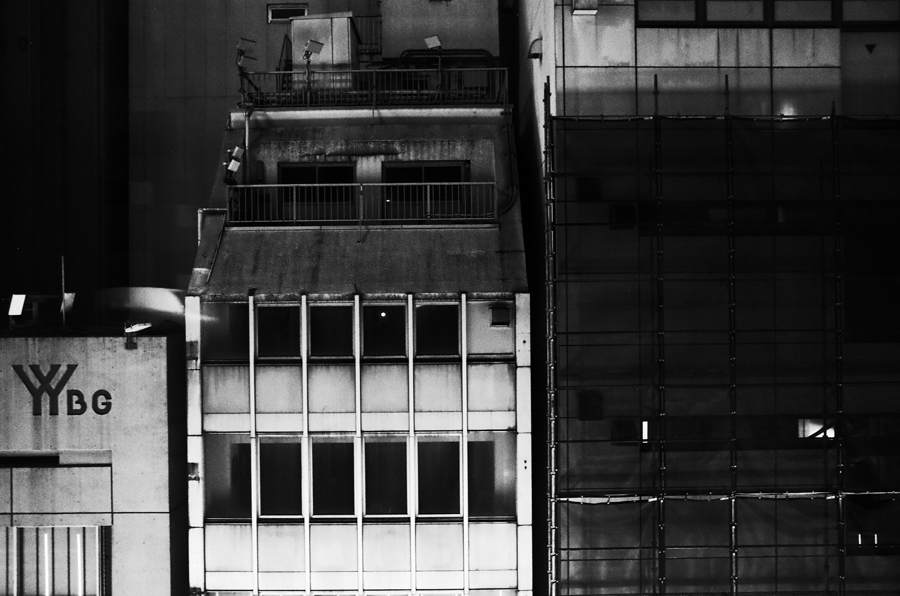Back to Tokyo, Japan

Back in October 2022, I booked a trip back to Tokyo when the Japanese government announced that the borders were soon to be reopened to tourists. It had been three years since I had flown but I was ready. In a span of two weeks, I planned out the trip and did a currency exchange through my local bank. As with any trip I take, I packed light. A simple 28-liter backpack with compression bags is all I travel with. The only addition was a small sling pouch to carry my passport and camera accessories.
I arrived at Chicago’s O’Hare airport on the 21st of October. I found my gate for the flight to Narita and noticed a cardboard cut-out of a Japan Airlines flight attendant with a sign that asked for all passengers to wear masks. Masks were a requirement to board a Japan Airlines flight. Passengers without masks were handed masks by the gate agents. I checked in with one of the agents and was asked if I had already completed the MySOS application for entry into Japan. I had not. Fortunately, I had already downloaded the application onto my phone before I left home.
The MySOS application required passport information and COVID-19 vaccination records. Hotel contact information and travel details were asked, along with a basic health questionnaire form. The application turned red upon submission, which meant the information was ready to be reviewed. The gate agent told me that the application review could take hours to be completed. I was told itt was wise to submit it prior to flight, so that it would be reviewed by the time of arrival in Japan.
The flight to Narita was uneventful but smooth. There were few movies to watch, such as The Shawshank Redemption and Ford v Ferrari. Otherwise, most of the films were in Japanese, Chinese or Korean with limited subtitles. I ended up asleep most of the flight, unless food was served. Meal options included salads, curry, rice, chicken and ice cream. I would have enjoyed a mixed drink along with the meals but I was sober. A few days after the flight would mark one year without alcohol, so water or apple juice were my choices. Thankfully, there were no screaming babies.
The plane touched down in Narita around four in the afternoon on the 22nd of October. Once I deplaned, I saw that the MySOS application on my phone had turned blue. This indicated that I was approved for entry into Japan, after immigration and custom inspections. Towards the end of a long corridor, I was asked by an airport employee to scan the barcode on the MySOS application and was then presented with an all-access pass. The pass basically showed that I had passed the COVID-19 screening.
The customs and immigrations process was consistent with previous trips to Japan. Long lines, no questions and no issues. I exited the secured portion of the airport and was back in the lobby. I can remember the initial anxiety I had in this lobby when I first traveled to Japan in 2017. Over six thousand miles away from home, with no friends and not a clue what to do next. The fear was long gone on this third trip and I knew what to do. I located the escalator down to the lower level which housed a number of ticket counters for various train companies. I purchased an outgoing and return ticket for the Narita Express. Though I was uncertain about the departure time on the return ticket. It was about two hours prior to my flight out of Japan. In retrospect, I should not have accepted that time.


The train ride from the Narita airport to Tokyo Station was longer than I had remembered. It took over an hour to arrive. Similar to my trip in 2017, it was dark by the time the train had departed Narita, so I couldn’t see much outside of the windows. From Tokyo Station, I purchased a ticket to go to Akihabara Station. These transfer tickets are much cheaper and easy to purchase from the automated ticket machines. The ride from Tokyo Station to Akihabara Station only cost me 140 yen or about one dollar.
JR-East’s Hotel Mets Akihabara is built into the same structure as Akihabara Station. The stairs up to the hotel are located on the outside of the station, tucked into a corner. The check-in for the hotel was done via a touchscreen device built into the hotel lobby front desk. All I had to do was select check-in, scan my passport and the room key was deposited from the device. My room was located on the fifth floor, which faced a building that was shrouded with scaffolding. I worried that I would be able to hear or feel the trains due to the proximity. Yet the room was soundproofed well.

Similar to the room I stayed in at the Hotel Gracery in 2017, the room had a bathroom with a separated shower room. There was a walk-in shower and a tub against the back wall. The toilet was also similar, with a dashboard to select different preferences. There were options for a bidet, which I accidentally selected on first use. The seat could even be heated, which was too strange for me. The rest of the room was typical with a large bed, television on the wall, humidifier and blackout curtains.
Jet lag had yet to hit me, so I showered and walked over to the Akiba Culture Zone. Each of the five floors of the Akiba Culture Zone houses a various number of department stores. Most of the stores sell anime or pop culture related merchandise, both new and old. It can take hours to browse the shelves of each store. One of my favorite stores to visit is a narrow shop that sells secondhand gachapon merchandise. I purchased a small green JR-East train, which was to be my token for the trip.